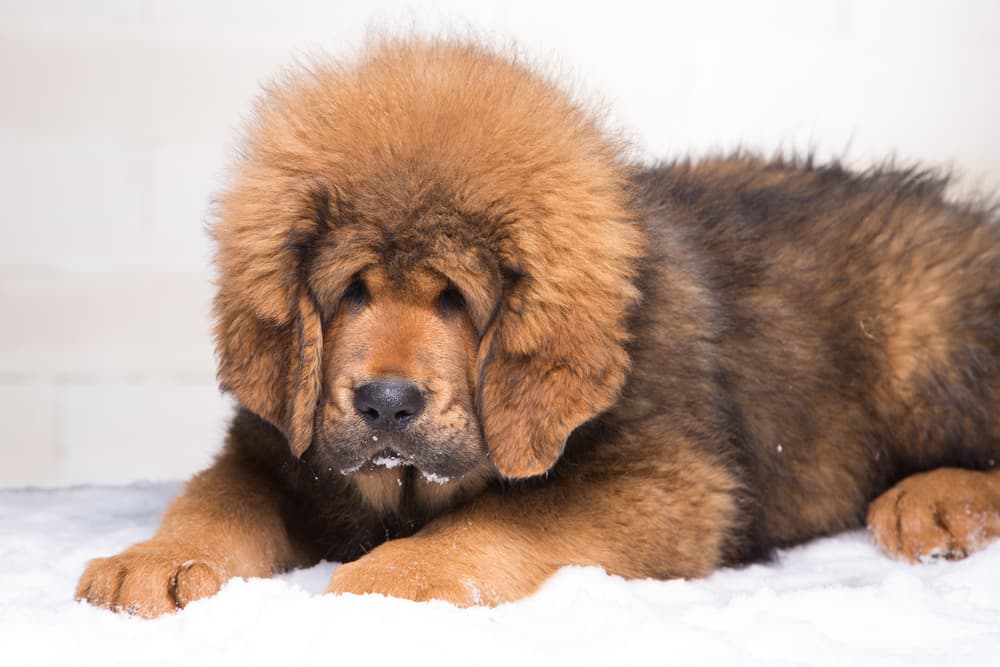Tibetan Mastiffs are large, powerfully built, well-boned, and muscled. While they are large and heavy dogs they are also always very agile and athletic. They have a double coat: a long, thick, coarse-textured top coat and a heavy but soft and woolly undercoat. Their coat is surprisingly low maintenance and comes in a wide variety of colors. The breed’s mane and large head provide a noble, dignified look that’s always impressive.
Tibetan Mastiffs are very fast compared to other large dogs. They’re even great climbers, so you’ll need a tall fence to keep them from exploring the neighborhood. Additionally, Tibetan dogs aren’t really meant for apartment living – they benefit from large spaces with a yard.
Despite their massive size and intimidating aura, Tibetan Mastiffs tend to be big softies when it comes to their human families. These pups are highly intelligent and independent yet sensitive to human moods. Nothing will escape their attention as they carefully and quietly guard their family. And although they’re independent, the Tibetan Mastiff should not be left to live outside. They’re companion dogs that need to be in the presence of human beings to be happy. Tibetan Mastiffs are full of personality, and you’ll love them for it.




















